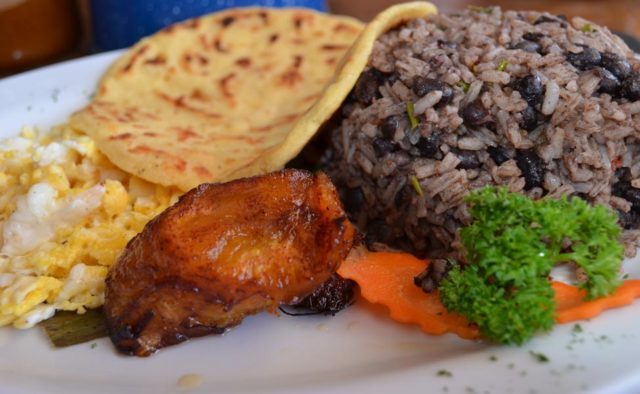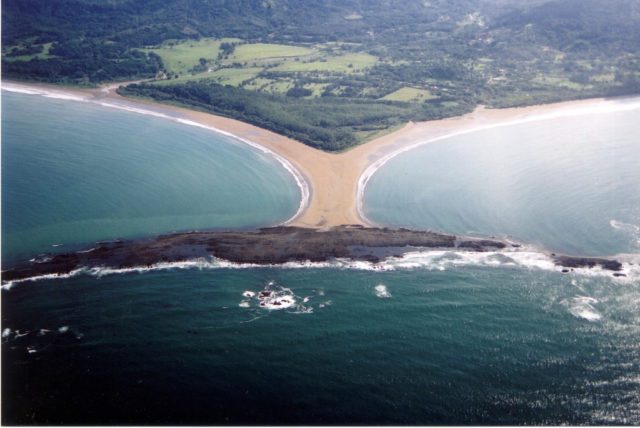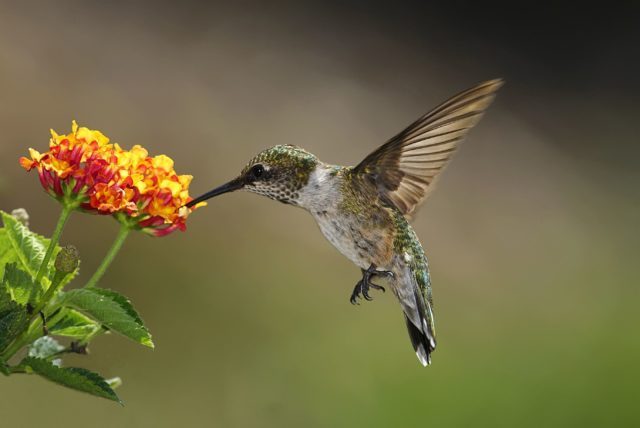This beautiful country of Central America, with a vast pre-Columbian history and coveted by the conquerors for the gold of its territory, today is a destination chosen by tourists who want to enjoy the “pure life” and nature in all its splendor. In this issue, we will tell you some curiosities about Costa Rica that will make you want to visit the country as soon as possible.
Costa Rica is an impressive country, where nature reigns in every corner. In addition to a privileged natural environment, its inhabitants have a very characteristic lifestyle that always places Costa Rica as one of the happiest countries in the world.
But there are a lot of things that I bet I did not know yet about this small, peaceful and eco-diverse country.
Interesting things about Costa Rica
Banknotes
Costa Rican banknotes are as colorful as their landscapes. Each denomination of Costa Rican cash presents a different landscape and animal, chosen among the enormous biodiversity of Costa Rica, including the white-tailed deer, the capuchin monkey, the lazy bear and the blue morpho butterfly, whose sighting is very common within the country.
Why are its inhabitants called Ticos?
The story comes from afar. In 1856 and 1857 Costa Rica was haunted by the army of pirates filibusters who wanted to storm the coast. Costa Rica had help from soldiers from other neighboring countries, who realized that Costa Rican fighters used a lot of the diminutive -ico, -ica (tiny, for example). In addition, they affectionately addressed their compatriots calling them hermanitics. With time and continued use, the inhabitants of the country became Ticos and Ticas.
Houses and streets without a name
Although San José was the first city in Latin America to be illuminated with electricity in many of the streets of the capital and other locations, there are no names or numbers. How do they know where to go or how to get there? Using signs, cardinal points and meters. For example, from the Church of San Rafael it continues 100 meters to the south and then 50 to the west to a house with red gates.
“Pure Life”
“Pure life” is commonly heard in Costa Rica and is often used as a greeting instead of a “hello” or a “goodbye”.
Nicoya is one of the 5 Blue Zone sites in the world
Nicoya, on the west coast of Costa Rica, is known as a major Blue Zone destination, which means that its inhabitants commonly live active lives and so long that they arrive after 100 years.
Coffee and rice
The typical breakfast of Costa Rica is the “Gallo Pinto”, which has nothing to do with the farm animal, but with a combination of beans, rice, custard (sour cream), ripe plantain, and eggs. No doubt, they are suitable only for strong stomachs.

Being a coffee country, the “ticos” consume it a lot: at least two cups at breakfast and several more during the day, always accompanied by bread or pastries.
Tiquicia, an affectionate nickname
The thing with the Ticos is not there, but that nickname was extended to the whole country. Costa Rica is also affectionately known as Tiquicia, the land of Ticos Tiquicia has such impressive landscapes
Ballena Bay has, literally, the shape of a whale’s tail!
The popular beach of Bahía

Penicillin is Tica; one of the most unknown curiosities of Costa Rica
Surely you have always heard that Alexander Fleming discovered the properties of penicillin. But in Costa Rica they disagree. Costa Rican doctor Clodomiro Picado (nicknamed “Chlorito”) was his predecessor, publishing a report on the effects of penicillin on his patients in 1927, a year before Fleming patented the discovery. Chlorito notified the Paris Academy of Sciences of his discovery before Fleming, but it was not recognized.
A protected country
One of the curiosities about Costa Rica that surely surprises you is that, regardless of the time of year, it always dawns at 5:30 in the morning and dusk at 5:30 in the afternoon.
In turn, in its territory there are 28 parks and national reserves (25% of its extension) where 6% of the species of flora and fauna of the world live. It is home to more than 50 species of hummingbirds, 20,000 species of spiders and 10% of butterflies from around the world. It is worth mentioning that sport hunting is prohibited.

Recreational hunting is prohibited
To show the great respect Costa Ricans have for animals, the government banned hunting as a recreational activity in 2012. One of the curiosities of Costa Rica that shows that they love nature.
It has no army
Costa Rica proudly praises the absence of an army since 1948, after it was abolished as a result of the victory in that year’s civil war.
Education and health are free
In Costa Rica there is a free health system where even medicines are delivered by doctors. The primary and secondary schools are also free. In turn, the national radio station gives classes for those who for different reasons cannot attend school.

Do you know the “mentiriólogo”? One of the funniest curiosities in Costa Rica…
As soon as we arrived in the country we spent the first days constantly looking at the weather forecasts. The gray sky threatened and we did not want the rain to bother our plans. But soon we realized that it was useless to look at what the meteorologists said. Being located between 2 oceans and having many mountainous areas in such a small territory, the climate of Costa Rica is absolutely unpredictable. That is why meteorologists do not usually guess one and have earned the nickname of “mentiriólogos” (from the Spanish verb “mentir” = to lie).
Ethnic diversity
Costa Rica was named in that way by Christopher Columbus. After the Spaniards arrived other settlers, including Germans, Poles, Italians and French. Later people from Jamaica and other Caribbean islands landed.
At present, many citizens of other Latin countries choose this country to escape the reality of their places of origin. All this results in a great ethnic, cultural, and linguistic diversity.
Costa Rica generates more than 99% of its electricity using renewable energy
One of the most important facts about Costa Rica is that the country generates the majority of its energy using 5 renewable sources: hydroelectric, wind, geothermal, biomass, and solar energy.
There are a thousand ways to call the rain
Just as the Eskimos have different words to differentiate between 30 shades of white, in Costa Rica the rain is called in many ways. It is a very rainy country, so it has the largest rivers in the world behind those of New Zealand. When it rains very little, it is called cat hair or garúa. On the other hand, when the rain is intense, it is called baldazo, rain or temporary. Another way to call rain, especially in the Caribbean, is wadding (from English water).
It is categorized as one of the happiest countries in the world
It should not be surprising all that this little Central American jewel has to offer. Do you find it hard to believe it? Come and see it by yourself; We promise you will not be disappointed!
Volcanoes are protagonists of several curiosities of Costa Rica
There are around 200 volcanic formations in the country, half active. The most famous volcano is the Arenal, it is also one of the most active in the world. Luckily, since 1968 there is no dangerous eruption. Still, with so many volcanoes, the land in Costa Rica is alive: the Vulcanological and Seismological Observatory of Costa Rica records several tremors every day
Take into account the Tica hour
We are not referring to any advance of the hour! The safest thing is that if you stay with a tico at an hour, come a little later. This delay is part of the culture of the country and is known as the hour.
The largest lake in the country is artificial!
One of the most unusual curiosities in Costa Rica: Lake Arenal is the largest in the country and it is artificial! It is at the foot of the Arenal Volcano and is a great recreational water sports center.
Cold pipe is the remedy for all evils
There is nothing more appetizing than laying on a Costa Rican beach with a cold pipe in your hand. Pipe is called young green coconut, which has a very rich water inside. This liquid is very nutritious thanks to potassium and the large amount of antioxidants it contains. It also has isotonic properties and is ideal to avoid dehydration. Because of all this, during the Second World War, coconut water was used as a substitute for plasma for emergency blood transfusions.
The most remote part of Costa Rica is one of the most famous worldwide!
Have you heard of Isla del Coco? It is a Pacific island 600 kilometers from the mainland. It is totally uninhabited despite being large enough (12 × 5 kilometers). Maybe saying it like that does not sound like anything. But, what if we tell you that there was filmed the start of the movie Jurassic Park? Millions of people have virtually visited Isla del Coco without knowing it, one of the most artistic curiosities in Costa Rica.
It is not enough to know Spanish to understand everything in Costa Rica
Another of the curiosities of Costa Rica is the amount of words they use. The street slang is called “pachuco” and the truth is that it seems a language totally different from Spanish. “Bretear” means to work; “mae” is equivalent to the “tío” in Spain, or “tuanis” is used when something is cool. Other words that seemed curious to us was to call the gas station “pump” or “prey” to a traffic jam.
